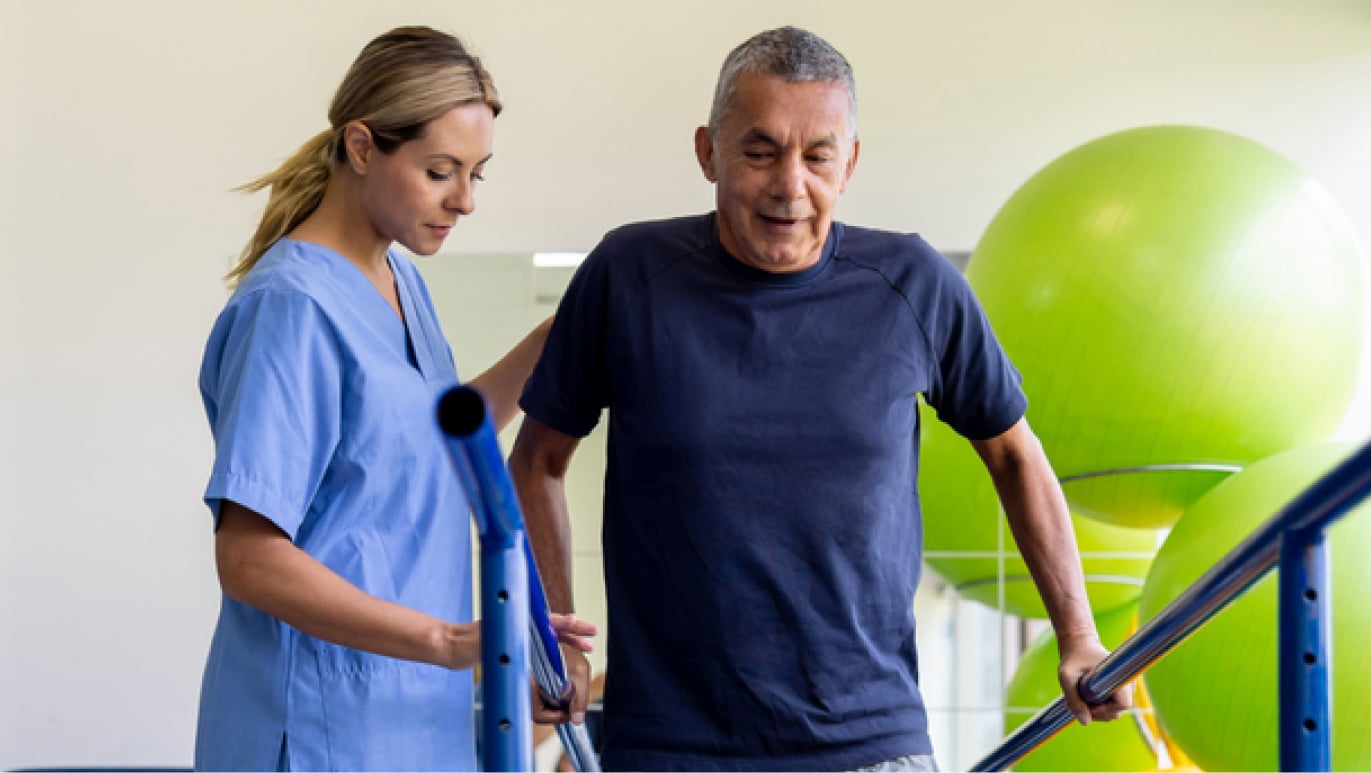Degenerative joint disease of the knee, also known as osteoarthritis (OA) of the knee, is one of the most common joint disorders, affecting millions of people worldwide. Often referred to as “wear-and-tear” arthritis, knee OA involves the gradual breakdown of cartilage in the knee joint, leading to pain, stiffness, and decreased mobility. This condition significantly impacts the quality of life, especially in older adults, making it a leading cause of disability. Understanding the causes, symptoms, and risk factors associated with knee osteoarthritis is crucial for early detection and effective management.
Causes of Knee Osteoarthritis
Osteoarthritis of the knee is primarily caused by the degeneration of cartilage, the smooth tissue that cushions the ends of bones in the joint. As this cartilage wears away, bones begin to rub against each other, leading to pain, swelling, and reduced joint function. Several factors contribute to the development of knee OA and increase the likelihood that individuals will develop osteoarthritis over time:

Age-Related Degeneration
As people age, the ability of cartilage to repair itself decreases, leading to the gradual breakdown of this protective tissue. The cumulative effects of decades of joint use contribute to the development of OA, which is why the condition is more common in older adults.
Cartilage loses some of its elasticity, making it more susceptible to damage from daily activities and minor injuries. This reduced resilience accelerates the wear-and-tear process, leading to osteoarthritis.
Genetic Factors
Genetics play a significant role in the development of knee osteoarthritis. Individuals with a family history of OA are more likely to develop the condition themselves, indicating that genetic predisposition can influence cartilage health and joint integrity.
Certain genetic mutations may affect the production of collagen, a key component of cartilage, leading to an increased risk of early-onset osteoarthritis. Research is ongoing to identify specific genetic markers that contribute to the susceptibility of OA.
Previous Joint Injuries
Injuries such as torn ligaments, meniscal tears, and fractures can damage the knee joint and increase the likelihood of developing osteoarthritis later in life. Athletes, especially those involved in high-impact sports like football or basketball, are at a higher risk due to repetitive stress and joint injuries.
Osteoarthritis that develops after a joint injury is known as post-traumatic osteoarthritis. The initial injury can cause long-term damage to cartilage, leading to the gradual onset of OA years or even decades later.
Mechanical Stress and Overuse
Jobs that involve repetitive knee movements, heavy lifting, or prolonged periods of standing can contribute to the development of knee osteoarthritis. Occupations such as construction work, farming, and assembly line work are associated with a higher risk of OA due to chronic joint stress.
Repeated movements that place stress on the knee joint, such as squatting, kneeling, or climbing stairs, can accelerate cartilage breakdown. Over time, these repetitive actions lead to increased wear-and-tear, contributing to the onset of OA.
Obesity
Obesity is one of the most significant risk factors for knee osteoarthritis. Excess body weight increases the mechanical load on the knee joints, leading to accelerated cartilage wear. For every pound of body weight, the knee experiences approximately four pounds of pressure, highlighting the impact of obesity on joint health.
In addition to mechanical stress, obesity is associated with chronic low-grade inflammation, which can further damage cartilage and contribute to the development of osteoarthritis. Fat tissue produces inflammatory cytokines that can exacerbate joint degeneration.
Symptoms of Knee Osteoarthritis
The osteoarthritis symptoms of knee osteoarthritis vary in severity and can progress over time. Early symptoms may be mild and intermittent, but as the condition worsens, symptoms can become more persistent and debilitating.
Pain, Discomfort, and Pain Relief
Osteoarthritis pain is the most common symptom of knee osteoarthritis. Initially, pain may occur during or after physical activity, such as walking, climbing stairs, or exercising. As OA progresses, pain may become more constant and occur even at rest.
Many people with knee OA experience stiffness in the joint, particularly in the morning or after periods of inactivity. Morning stiffness usually lasts for less than 30 minutes and improves with movement.
Swelling and Inflammation
Swelling around the knee joint is a common symptom of OA and is caused by inflammation of the synovial membrane, which lines the affected joints. Swelling may be accompanied by warmth and redness in the affected area.
In some cases, fluid can accumulate in the knee joint, a condition known as joint effusion. This excess fluid can contribute to pain, stiffness, and limited mobility.
Reduced Range of Motion and Joint Stiffness
As knee osteoarthritis progresses, the joint may lose its full range of motion, making it difficult to fully bend or straighten the knee. This loss of flexibility can impact daily activities, such as walking, climbing stairs, or getting in and out of a car.
Some individuals with knee OA may experience a sensation of the knee “locking” or “giving way,” which can be caused by loose fragments of cartilage or bone interfering with joint movement. This instability increases the risk of falls and injuries.
Crepitus
Crepitus refers to the grating, cracking, or popping sounds that may occur when moving the knee joint. These sounds are caused by the roughened surfaces of the joint rubbing against each other due to cartilage loss.
While crepitus is common in people with knee OA, it does not always correlate with the severity of the condition. However, it can be an early sign of joint degeneration.
Risk Factors for Knee Osteoarthritis
Several factors increase the risk of developing knee osteoarthritis. Understanding how osteoarthritis affects different joints and individuals in varied ways can help individuals take preventive measures to reduce their likelihood of developing the condition.
Age
The risk of developing knee osteoarthritis increases with age. Most people over the age of 50 develop osteoarthritis as the cumulative effects of joint use and cartilage wear become more pronounced with time.
As the global population ages, the prevalence of knee osteoarthritis is expected to rise, making it a growing public health concern.
Gender
Women are more likely than men to develop knee osteoarthritis, particularly after the age of 50. The reasons for this gender difference are not fully understood but may involve hormonal changes, differences in joint structure, and variations in muscle strength.
The decline in estrogen levels after menopause is thought to contribute to the increased risk of OA in women. Estrogen has protective effects on cartilage, and its loss may accelerate joint degeneration.
Obesity
Obesity is a modifiable risk factor for knee osteoarthritis. Maintaining a healthy weight through diet and exercise can significantly reduce the risk of developing OA and slow the progression of the condition in those already affected.
Addressing obesity through public health initiatives is critical for reducing the burden of knee osteoarthritis. Weight management programs, community fitness initiatives, and education on healthy eating are essential components of OA prevention.
Joint Injuries
Preventing injuries to various joints, including the hip joint and knee, especially in athletes and individuals engaged in high-impact activities, is important for reducing the risk of post-traumatic osteoarthritis. Proper training, the use of protective gear, and rehabilitation after injuries can help protect joint health.
Even minor injuries can have long-term consequences for joint health. Individuals with a history of knee injuries should be vigilant about monitoring for early signs of OA and seek medical advice if symptoms develop.
Repetitive Stress
Jobs that involve repetitive knee movements, heavy lifting, or prolonged standing can increase the risk of knee osteoarthritis. Workers in these occupations should take precautions to protect their joints, such as using proper body mechanics, taking regular breaks, and wearing supportive footwear.
Employers can play a role in reducing the risk of OA by providing ergonomic work environments and promoting joint health in the workplace. Ergonomic assessments, job rotation, and education on joint protection can help mitigate the risk of OA in at-risk occupations.
Diagnosing Osteoarthritis
Accurate diagnosis of osteoarthritis is crucial for effective management and treatment. The process typically involves several steps to ensure a comprehensive evaluation:
- Medical History: The first step in diagnosing osteoarthritis involves a thorough medical history. Your doctor will ask about your symptoms, such as the onset and duration of joint pain, stiffness, and any factors that alleviate or worsen these symptoms. They will also inquire about your lifestyle, including physical activity levels and any previous joint injuries, to assess the likelihood of osteoarthritis.
- Physical Examination: During the physical examination, the doctor will assess the affected joint for signs of osteoarthritis. This includes checking for joint tenderness, swelling, and range of motion. They will also evaluate your joint strength and flexibility to determine the extent of the condition.
- Imaging Tests: Imaging tests are essential for confirming the diagnosis of osteoarthritis and ruling out other conditions. X-rays are commonly used to visualize the joint structure and detect changes such as cartilage loss, bone spurs, and joint space narrowing. In some cases, an MRI or CT scan may be ordered to provide a more detailed view of the joint and surrounding tissues.
- Laboratory Tests: While there is no specific blood test for osteoarthritis, laboratory tests can help rule out other conditions that cause similar symptoms, such as rheumatoid arthritis. Blood tests may be conducted to check for markers of inflammation or autoimmune diseases. Additionally, joint fluid analysis can be performed to examine the synovial fluid for signs of inflammation or infection.

Treatment Options for Knee Osteoarthritis
Managing knee osteoarthritis involves a combination of lifestyle changes, medications, physical therapy, and, in severe cases, surgery. Here are some effective treatment options:
- Lifestyle Modifications: Adopting healthy lifestyle habits is a cornerstone of osteoarthritis management. Maintaining a healthy weight is crucial, as excess body weight places additional stress on weight-bearing joints like the knees. Regular exercise, such as low-impact activities like swimming or cycling, can help improve joint mobility and strength while reducing pain. Avoiding activities that exacerbate joint pain, such as high-impact sports, is also important.
- Medications: Various medications can help relieve pain and reduce inflammation associated with knee osteoarthritis. Over-the-counter pain relievers like acetaminophen or nonsteroidal anti-inflammatory drugs (NSAIDs) such as ibuprofen are commonly used. In some cases, doctors may recommend injections of corticosteroids to reduce inflammation or hyaluronic acid to improve joint lubrication and mobility.
- Physical Therapy: Physical therapy plays a vital role in managing knee osteoarthritis. A physical therapist can design a personalized exercise program to strengthen the muscles around the knee, improve flexibility, and reduce pain. Techniques such as manual therapy, ultrasound, and electrical stimulation may also be used to enhance joint function.
- Surgery: When conservative treatments fail to provide relief, surgical options may be considered. Joint replacement surgery, such as total knee replacement, involves replacing the damaged joint with an artificial one. This procedure can significantly improve pain and function in individuals with severe osteoarthritis. Other surgical options include arthroscopy to remove loose cartilage or bone fragments and osteotomy to realign the knee joint.
Preventing Osteoarthritis
While osteoarthritis cannot be entirely prevented, certain measures can help reduce the risk of developing the condition. Here are some effective strategies:
- Maintaining a Healthy Weight: Keeping a healthy weight is one of the most effective ways to reduce the risk of osteoarthritis, particularly in weight-bearing joints like the knees and hips. Excess body weight increases the mechanical load on these joints, accelerating cartilage wear and tear. By maintaining a healthy weight through a balanced diet and regular exercise, you can protect your joints and reduce the risk of developing osteoarthritis.
- Engaging in Regular Exercise: Regular physical activity is essential for joint health. Exercise helps improve joint mobility, strengthen the muscles around the joints, and reduce the risk of developing osteoarthritis. Low-impact activities such as walking, swimming, and cycling are particularly beneficial. It’s important to incorporate a mix of aerobic exercises, strength training, and flexibility exercises into your routine.
- Avoiding Joint Injury: Preventing joint injuries is crucial for reducing the risk of osteoarthritis. Wearing protective gear during sports and using proper techniques can help minimize the risk of joint injury. Additionally, avoiding repetitive stress on the joints, such as excessive kneeling or squatting, can help protect joint health.
- Managing Chronic Conditions: Managing chronic conditions like diabetes and rheumatoid arthritis is important for reducing the risk of developing osteoarthritis. These conditions can contribute to joint inflammation and damage, increasing the likelihood of osteoarthritis. By effectively managing these conditions through medication, lifestyle changes, and regular medical check-ups, you can protect your joints and reduce the risk of osteoarthritis.
By understanding the steps involved in diagnosing osteoarthritis, exploring various treatment options, and taking preventive measures, individuals can better manage their joint health and improve their quality of life.

Reduce the Impacts of Osteoarthritis of the Knee
Osteoarthritis of the knee is a common and debilitating condition that affects millions of people worldwide. Understanding the causes, symptoms, and risk factors associated with knee OA is essential for early detection and effective management. While some risk factors, such as age and genetics, cannot be changed, others, such as obesity and joint injuries, can be addressed through lifestyle modifications and preventive measures. By staying informed and taking proactive steps to protect joint health, individuals can reduce their risk of developing knee osteoarthritis and improve their quality of life.
If you have recently been diagnosed with osteoarthritis of the knee or are seeking advanced treatment options, consider applying to a clinical trial testing potential new treatments and therapies to reduce joint pain and stiffness associated with osteoarthritis. Explore our currently enrolling studies or contact us to help us pair you with the right trial for your condition.
